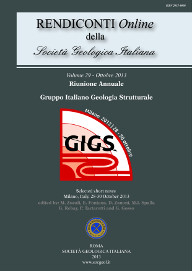
Thermal evolution of Paleozoic and Mesozoic-Cenozoic successions of the Carpathian orogenic system (central sector - Ukraine) from the fold and thrust belt to the foreland by means of organic petrography, spectroscopy and XR Diffraction: preliminary results
Andrea Schito (a), Luca Aldega (b), Sveva Corrado (a), Lea Di Paolo (a) & Giovanni Gangemi (a)
(a) Department of Sciences , University of Roma Tre, Largo San Murialdo, 1, 00146, Rome, Italy. E-mail: andrea.schito@uniroma3.it
(b) Department of Earth Sciences , Sapienza University of Rome, Piazzale Aldo Moro, 5, 00185, Rome, Italy.
Volume: 29/2013
Pages: 162-164
Abstract
Optical analysis and FTIR spectroscopy of organic matter dispersed in sediments, as well as X-ray diffraction of clay minerals were performed on the Mesozoic-Cenozoic successions of the outer Carpathian fold-andthrust belt and the Paleozoic successions of the Podolia foreland in order to unravel the thermal evolution of the Carpathian orogenic system. Our results indicate higher thermal maturity for samples collected in the Podolia foreland with respect to the Carpathian fold-and-thrust belt. In the Carpathian area a decreasing trend of thermal maturity can be recognized moving from Cretaceous formations to the Oligocene-Miocene ones with values comprised between the immature and mature stage of hydrocarbon generation. This trend is preserved in all the analyzed thrust sheets. This piece of evidence suggests a weak influence of tectonic loading due to thrust emplacement since Early Miocene on thermal maturity distribution. On the other hand, petrographic and mineralogical data from Podolia foreland show thermal maturity levels compatible with late diagenetic conditions. These values are not justified for an area that was not deformed by the Caledonian and Variscan orogenic phases and where structural data do not show any evidence of deformation that can justify the observed levels of thermal maturity. A possible cause of the high thermal maturity may be the occurrence of high heat flow values close to the major tectonic lineament of the Trans-European Suture Zone.
Keywords
Carpathian fold-and-thrust belt, FTIR spectroscopy, organic matter reflectance, Podolia foreland, X-Ray diffraction
Get Full Text